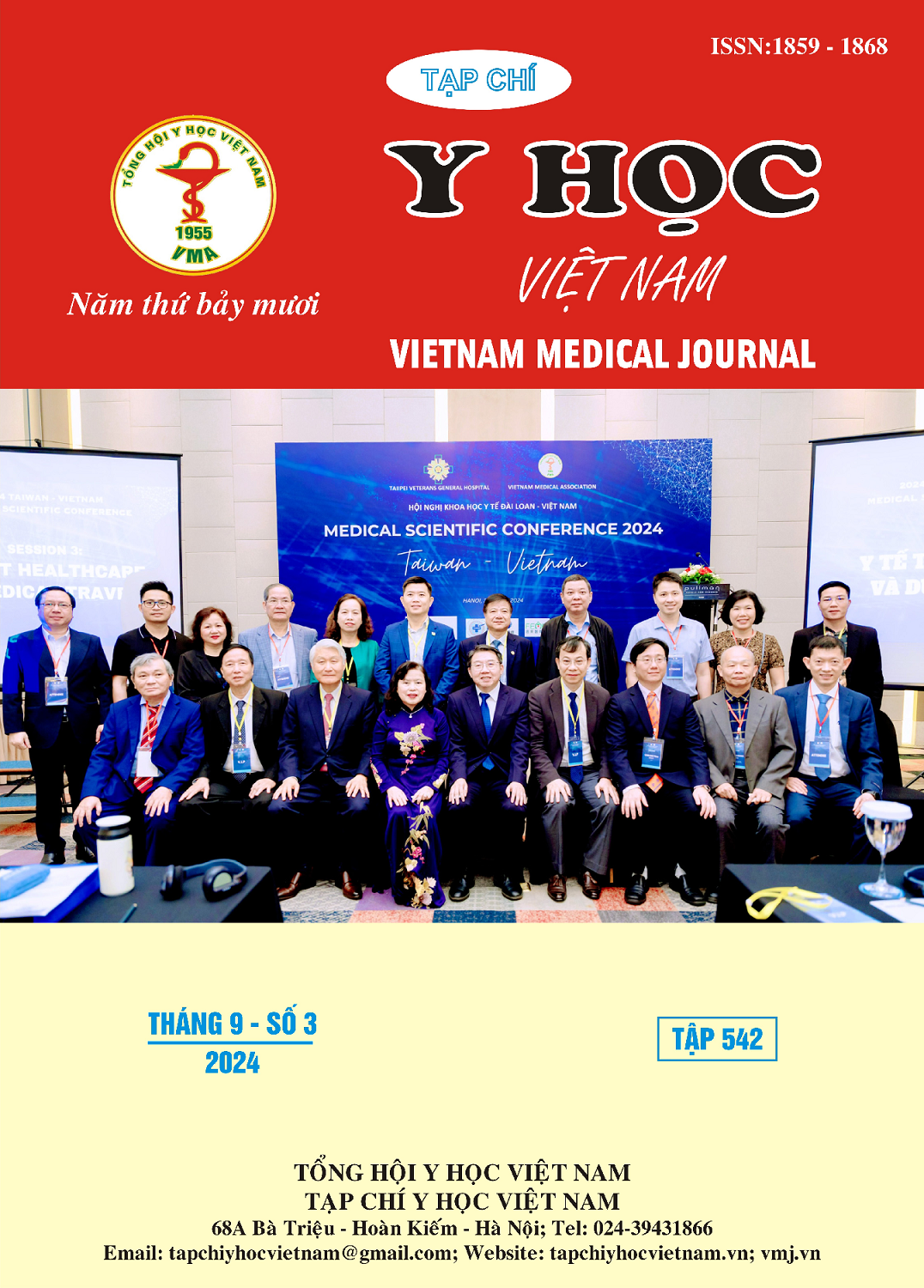REVIEW OF RESEARCH ON USING LIVER FATTY ACID BINDING PROTEIN MARKER FOR EARLY ASSESSMENT OF ACUTE KIDNEY INJURY IN THE PERIOD 2013 – 2023
Main Article Content
Abstract
Traditional diagnosis of kidney injury, especially acute kidney injury (AKI), relies on oliguria and increased serum creatinine levels, which are signs with low sensitivity and specificity and are delayed compared to the damage occurring in the kidney. Liver fatty acid binding protein (L-FABP) in urine is considered a useful biomarker for early detection of kidney injury. Objective: Application of L-FABP in early assessment of acute kidney injury. Research object: The research overview was conducted from studies and reports in the period 2013-2023 in the world and in Vietnam. Research methods: Online medical databases, documents, research works, theses, domestic and foreign conference reports were used to search for data, Zotero software 6.0 is used to manage and cite collected documents. Results: 20 studies and reports from around the world and Vietnam were selected for the study, including 18 articles using L-FABP to evaluate/predict/prognose AKI in diseases such as sepsis patients in intensive care unit (ICU), acute heart failure, decompensated heart failure, Diabetic Nephropathy (DN), Cirrhotic patients, Neonatal infections, postoperative prognosis, after organ transplant, after kidney transplant and there are 2 articles that are meta-analysis studies on the role of L-FABP. There was a positive correlation between L-FABP concentration in urine and the occurrence of AKI in the studied patients. Conclusion: AKI is a common clinical disease that leads to renal failure and a series of clinical syndromes. The increasing incidence of the disease is the leading cause of increased mortality worldwide. Early detection by L-FABP has a great importance for timely intervention and improved prognosis.
Article Details
Keywords
L-FABP, kidney, liver fatty acid binding protein, kidney injury, acute kidney
References
2. Slocum JL, Heung M, Pennathur S. Marking renal injury: can we move beyond serum creatinine? Transl Res J Lab Clin Med. Tháng Tư 2012;159(4):277–89.
3. Uchino S. Creatinine. Curr Opin Crit Care. Tháng Chạp 2010;16(6):562–7.
4. Xu Y, Xie Y, Shao X, Ni Z, Mou S. L-FABP: A novel biomarker of kidney disease. Clin Chim Acta. 2015;445:85–90.
5. Sato R, Suzuki Y, Takahashi G, Kojika M, Inoue Y, Endo S. A newly developed kit for the measurement of urinary liver-type fatty acid-binding protein as a biomarker for acute kidney injury in patients with critical care. J Infect Chemother. 2015;21(3):165–9.
6. Ek-Von Mentzer BA, Zhang F, Hamilton JA. Binding of 13-HODE and 15-HETE to phospholipid bilayers, albumin, and intracellular fatty acid binding proteins. implications for transmembrane and intracellular transport and for protection from lipid peroxidation. J Biol Chem. 11 Tháng Năm 2001;276(19):15575–80.
7. Schiffl H, Lang SM. Update on biomarkers of acute kidney injury: moving closer to clinical impact? Mol Diagn Ther. 1 Tháng Tám 2012;16(4):199–207.
8. Xu Y, Xie Y, Shao X, Ni Z, Mou S. L-FABP: A novel biomarker of kidney disease. Clin Chim Acta Int J Clin Chem. 20 Tháng Năm 2015;445:85–90.
9. Noiri E, Doi K, Negishi K, Tanaka T, Hamasaki Y, Fujita T, và c.s. Urinary fatty acid-binding protein 1: an early predictive biomarker of kidney injury. Am J Physiol-Ren Physiol. 2009;296(4):F669–79.


